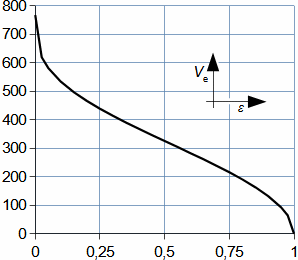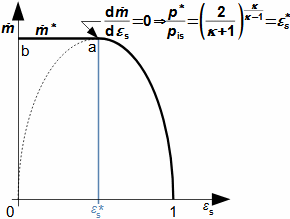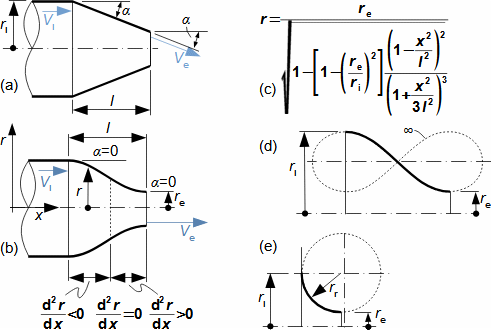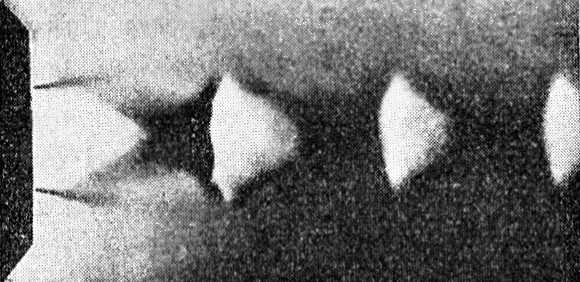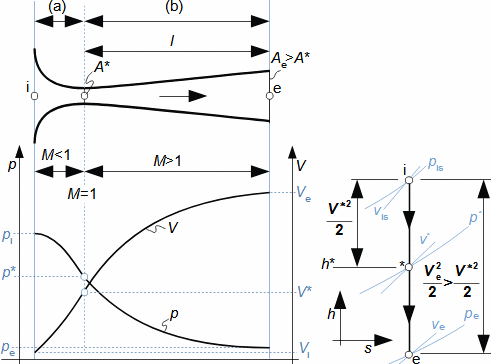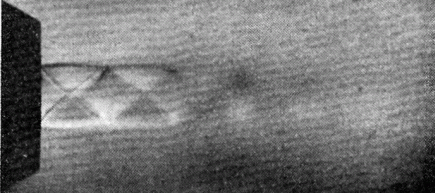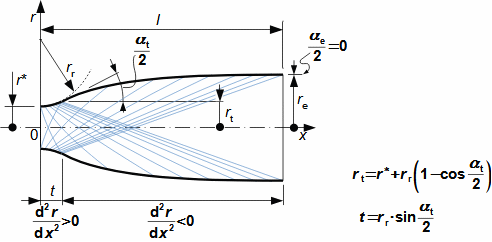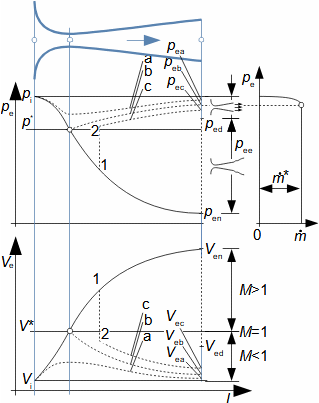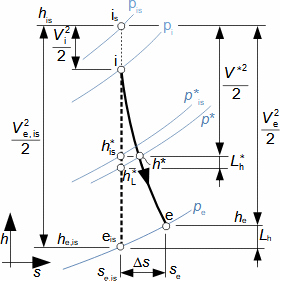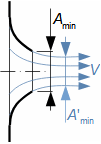What are nozzles and other applications of nozzle theoryThe nozzle is a channel with a continuously variable flow flow area. Fluid flow in a nozzle is a process in which the pressure decreases and the kinetic energy of the fluid increases. Convergent nozzle (Tapering nozzle)The basic nozzle shapes are the convergent or tapering nozzle, in which subsonic expansion takes place, and the convergent-divergent or de Laval nozzle for supersonic expansion, the shape of which is based on Hugoniot's theorem (area-Mach number realation) for the supersonic flow channel. The nozzle theory is well developed and has a wide application in various types of jet machines. In fact, jet theory can be used to describe some apparently complex flows. In addition, a large amount of measured data exists for jets. Convergent nozzleExpansion in a nozzle is a frequent problem in engineering, which is why the theory of ideal nozzle expansion was developed in the 19th century [Nožička, 2000]. This theory describes the changes of state variables in a nozzle, especially velocity and mass flow. There are several approaches to nozzle shape design, mainly depending on the purpose of the nozzle, the technological complexity of its production and the required maximum length. Outlet velocityBackpressureFrom the changes of the state variables in the nozzle plotted in the h-s chart, it can be seen that the gas velocity at the nozzle outlet depends on the inlet pressure pi and the outlet pressure pe (backpressure) from the nozzle. Equation 1 for the outlet velocity can then be derived from the First Law of Thermodynamics equation for an open system. This equation is derived for the perfect expansion of an ideal gas without the effect of gravity. 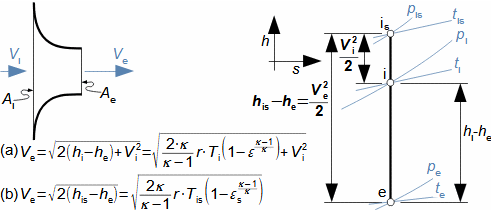 1: Nozzle outlet velocity and pressure ratio |
